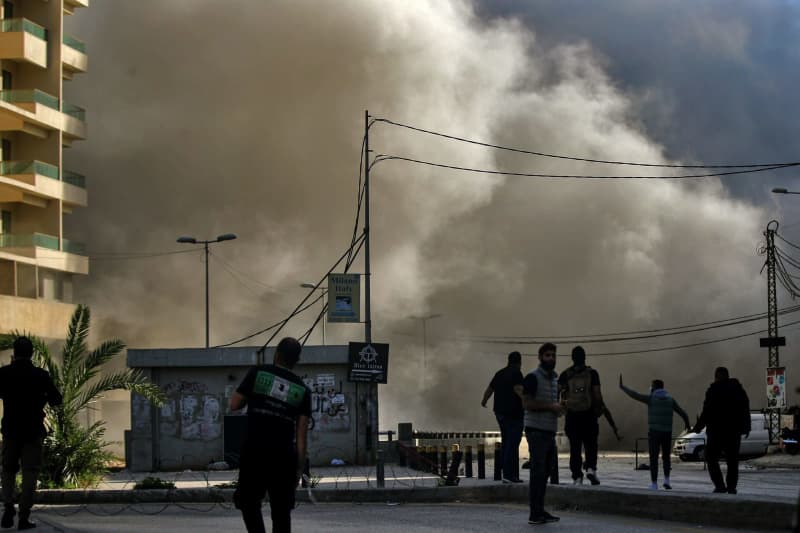On Friday, Israel intensified its military operations in Lebanon, launching a series of airstrikes primarily targeting Beirut’s southern suburbs, which are known as a stronghold of the Iranian-aligned Hezbollah movement. This aggressive campaign saw a total of 12 airstrikes conducted throughout the day, particularly impacting neighborhoods like Ghobeiri, Galerie Semman, Chiyah, and Haret Hreik. The bombardments led to considerable destruction, including the collapse of buildings and the outbreak of fires. Earlier strikes had already hit additional locations in Hadath and Haret Hreik, where the Israeli military had issued evacuation warnings, urging residents to maintain a safe distance of at least 500 meters from the targeted areas.
The collateral damage from these airstrikes included recent attacks on United Nations peacekeeping operations in the region. The UN Interim Forces in Lebanon (UNIFIL) reported that two rockets, presumably fired by Hezbollah or affiliated factions, hit their Sector West Headquarters in Shama, injuring four Italian peacekeepers. Fortunately, their injuries were not life-threatening, but the attack caused significant damage to the facilities, including a bunker and logistics area. This assault was part of a disturbing pattern, as it represented the third attack on the Shama base within a week, coinciding with escalating ground skirmishes and artillery exchanges in the regions of Shama and Naqoura, along the Israeli-Lebanese border.
Casualties from the Israeli strikes in southern Lebanon were staggering, particularly among healthcare workers. Five paramedics were reported killed in two separate Israeli strikes, one targeting a vehicle belonging to the Islamic Health Authority Association, which is connected to Hezbollah. This contributed to the larger toll of at least 214 healthcare workers killed, with over 321 others injured since the escalation of the conflict. The situation for civilians continued to deteriorate, as estimates indicated that nearly 3,600 individuals had died in total due to Israeli attacks, with more than 15,000 injured and over 1 million displaced, reflecting the severe humanitarian crisis facing Lebanon since the conflict intensified.
Simultaneously, the humanitarian crisis in Gaza worsened, as reported casualties continued to grow due to ongoing Israeli airstrikes. Palestinian media indicated that at least eight individuals, including women and children, were killed in airstrikes in Gaza City. These claims were made by WAFA news agency, although independent verification was lacking. The Israeli military noted that it was investigating such incidents while maintaining its operational focus against Hamas fighters, particularly in the Jabaliya refugee district, which has been scrutinized for housing explosive rigged buildings. Furthermore, local authorities warned of imminent threats to the operations of hospitals in Gaza, citing a critical fuel shortage that could lead to closures or restrictions within a matter of days.
In this context of escalating violence, the toll on civilians in Gaza has become painfully evident. The continuous attacks have sparked widespread international concern over the humanitarian crisis unfolding in the region, with many organizations urging an immediate cessation of hostilities. With the Israeli military reporting ongoing and targeted efforts against Hamas and affiliated groups, the conflict has reached new levels of volatility. This escalation raises grave concerns about the long-term implications for not only the involved parties but also for the broader stability of the Middle East.
As tensions remain high on all fronts, the possibility of a diplomatic resolution seems increasingly remote. The situation requires immediate attention from the global community, as calls for ceasefires and humanitarian corridors grow louder. The need for a sustainable solution to the conflict is urgent, especially given the rising number of casualties and the deteriorating humanitarian conditions faced by civilians in both Lebanon and Gaza. The international community is faced with the pressing task of navigating the complex dynamics at play, aiming to mitigate the suffering of innocent civilians while addressing the underlying causes of conflict in the region.

